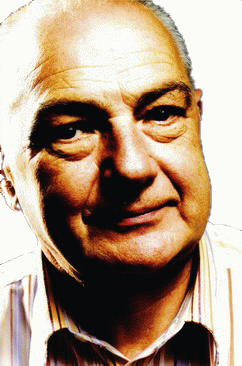|
1956, schon im Alter von 9 Jahren, gehörten Radios mit ihrem Innenleben zu meinen Favoriten. Meine erste Erfahrung mit einem geladenen Elko werde ich nie vergessen. Einfachste Mittel, Kupferdraht - Papprolle - Kristall - Grammofonnadel und ein uralter 2000 Ohm Kopfhörer, reichten für einen ersten Detektor aus. Das wenige Taschengeld reichte für eine bessere Diode oder später eine EC92 für's Zigarrenkisten-Audion und noch später einen OC71 zur NF-Verstärkung. Alte Chassis dienten als Spender für Draht, Kondensatoren oder Widerstände.
1964 begann ich eine Lehre zum Radio-Fernsehtechniker, die Welt war in Ordnung ... jeden Tag Radios. Zu verstehen, wie die Empfängerschaltungen funktionieren und Fehler zu suchen, war eine Seite, und die andere?? Die ersten, kleinen UKW-Sender entstanden mit dem AF118 von Valvo. Ausgerüstet mit Kofferradio und Sender wurde probiert wie weit es geht. Peu a peu entwickelte sich der Wunsch ein Stück weiterzukommen. Einige Zeit später fand ich den Einstieg zur erweiterten Kommunikation im 11 Meter Band mit einem HF13. Doch die Grenzen des CB-Funk waren auch rasch erreicht.
1979 legte ich die erste Amateurfunkprüfung ab und erhielt das Rufzeichen DG2NI. Nach der CW-Prüfung 1983 erhielt ich das Rufzeichen DL6NBS. Damals wurden die meisten "Hobbyprojekte" im Eigenbau realisiert und die Nächte waren kurz. Parallel dazu stand ein weiterführendes Studium an und die Prioritäten verlagerten sich. Beruflich bedingt war die Zeit für aktiven Amateurfunk in den Jahren 1985-2007 knapp bemessen. Dafür durfte ich lange Zeit im schönen Frankreich verbringen und für eine große Reifenfirma arbeiten, eine fantastische Zeit.
Dies hat sich geändert, im Jahr 2007 konnte ich in den Ruhestand eintreten und die alte Leidenschaft zum "Funken" erneuern. HAM-spirit lebt für mich, sowohl in meiner kleinen Werkstatt, als auch vor dem Transceiver mit Dir auf der anderen Seite.
1956 with the age of 9 years, old radios and their "inner life" had been my favorites. I'll never forget my first experience with a fully charged electrolyte capacitor. I built the first detectors with the simplest parts: copper wire, paper roll, crystallized quartz, gramophone needle, and a very old 2000 Ohm headphone. Then later, for my very small pocket money,I bought a germanium-diode, a tube for a audion in the cigar-box and later my first transistor (OC72) to amplify the weak AF-signal. Old radios were most used as donors for the necessary coils, resistors, capacitors etc.
1964 I began an apprenticeship as a technician for radio/television. Now the world was o.k. .. radios every day. Understanding the receivers wiring diagram and how to repair them was the first part, but the reversal ? One of the first Transmitters was emerged with a AF118 Transistor and a phone-capsule. Step by step the desire developed, to transmit by radio a little bit further than up to the neighbor's radio. Some years later I found the entry for "global" communication with CB. But quickly I recognized the limits of the Citizens' band.
1979 I passed the first amateur radio exam with the call DG2NI. After doing the CW test, I got the callsign DL6NBS in 1983. The most Ham-Radio Projects had been developed in "DIY". Mostly the nights have been very short. Parallel, I graduated a further study. In the years between 1985 and 2007 I had to spend my time for professional development, and had only a few hours to practice active amateur radio. Therefore, I could spend long time in the wonderful France, working for a big Tyre company -- a fantastic time!
This has changed. I could retire and renew the old passion "HAM-Radio" in 2007. Do it yourself is still important for me. So again and again small projects are growing. Ham-spirit is alive in both for me, in my little workshop as well as in front of the TRX with you on the other side.
Dès 1956, à l'âge de 9 ans, les radios et leur fonctionnement intérieur, étaient l'une de mes préférées. Je n'oublierai jamais ma première expérience avec un condensateur électrolytique chargé. Les moyens les plus simples, fil de cuivre - bobine de carton - cristal - aiguille de gramophone et un ancien casque de 2000 ohms suffisaient pour un premier détecteur. Le petit argent de poche était suffisant pour une meilleure diode ou plus tard un EC92 pour la boîte à cigares audion et encore plus tard un OC71 pour l'amplification LF. Les anciens châssis étaient utilisés comme donneurs de fils, de condensateurs ou de résistances.
En 1964, j'ai commencé un apprentissage de technicien radio-télé, le monde allait bien… Radios tous les jours. De comprendre comment les circuits récepteurs fonctionnent et comment dépanner était d'un côté et de l'autre ?? Les premiers petits émetteurs FM ont été créés avec l'AF118 de Valvo. Équipé d'une radio portable et d'un émetteur, il a été essayé jusqu'où cela allait. Peu à peu le désir de progresser un peu a développé. Quelque temps plus tard, j'ai trouvé le début d'une "communication étendue" dans la bande 11 mètres avec un HF13. Mais les limites de la radio CB ont également été rapidement atteintes.
En 1979, j'ai réussi le premier examen de radio amateur et j'ai reçu l'indicatif DG2NI. Après l'examen CW en 1983, j'ai obtenu l'indicatif DL6NBS. À cette époque, la plupart des "projets de loisirs" étaient DIY, les nuits étaient courtes. À l époque d'autres études étaient en cours et les priorités ont changé. En 1985-2007 le temps pour l'active radio était limité pour des raisons professionnelles. J'ai travaillé pour une grande entreprise de pneus et pourrais passer de temps dans la belle France, une expérience fantastique.
Cela a changé, en 2007. J'ai pu prendre ma retraite et renouveler mon ancienne passion. Pour moi HAM-spirit vit à la fois dans mon petit atelier et devant le radio avec vous de l'autre côté.
|
